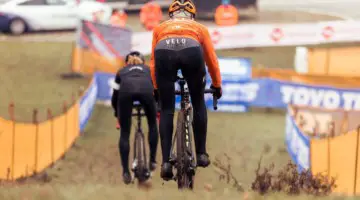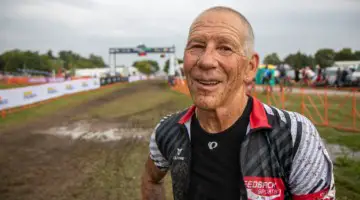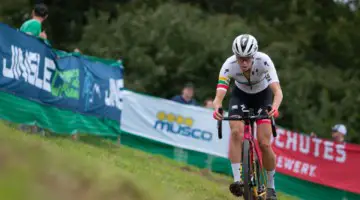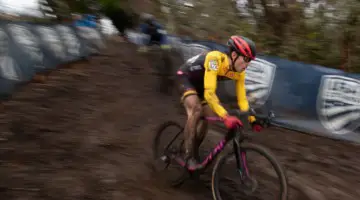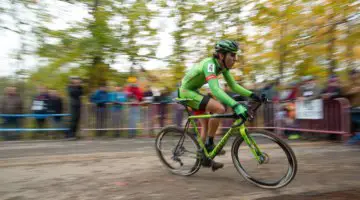Chris Mayhew from JBV Coaching has been walking us through the build-up to ‘cross season over the last few weeks. Many of you may be doing some of those first steps now or in the coming weeks, depending on when your season starts.
Continuing Mayhew’s series, we’re looking here at a pre-season taper. After a build up of cyclocross specificity and intensity, it’s time for some active recovery and letting that fitness take hold with a reasoned taper.
by Chris Mayhew
You’ve done a lot of work up to this point. You’ve also accumulated a lot of fatigue. With the right plan you can come into your first race with all of that fitness but also rested enough to take advantage of a small boost that is provided by being fresh. So let’s outline how to handle the 7 to 14 days before your first targeted races of the season.
Why taper? Up to this point you’ve been doing a lot of training. With that training comes fitness, but also fatigue. Ideally the work you’ve been doing each week is such that your body has to compensate for the stress. But that also leaves you feeling tired. And, if you’re like most athletes, you actually enjoy that feeling of being tired. It’s good to feel like you’ve been working as hard as you can. And it does result in great sustainable power gains. But that accumulated fatigue leaves you unable to really hit your potential when doing shorter efforts, such as those under five minutes. And those are the efforts that are really key to doing well in a ‘cross race. If you can recover from that fatigue while maintaining your fitness, not only will you have all the aerobic power you need, but you’ll get a small but important boost in your ability to kick or accelerate repeatedly during a race. You want to finish a taper feeling a bit antsy, but confident. Having a spring in your step. Feeling like you could absolutely crush your riding partners. Feeling rested and ready to go as hard as you can when the whistle blows.
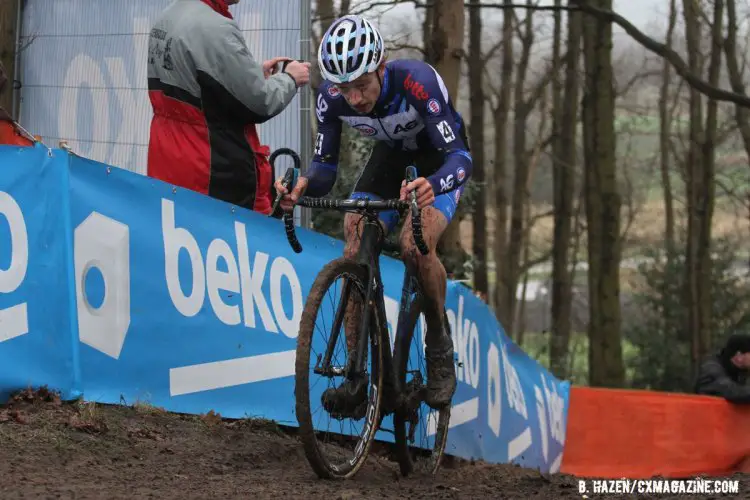
A solid taper can give you the boost you need for the hard accelerations required to race well. File photo from the 2016 World Cup Hoogerheide. © Bart Hazen
How do you manage your taper? Think of the extremes. You could lay in bed for a week before your race, with no training at all. But you’d feel very stale and unprepared for cyclocross’ short, violent efforts. You’d be too rested, and lose too much fitness in the process. On the other hand, you could do a couple of centuries the week of your race. You’d be fit, but not in any way rested. So where’s the middle ground? First, look at your average number of hours of on-bike training during the last three to four weeks. That’s roughly the number of days your taper should last. If you’ve been doing 10+ hours, your taper should be around 10 days. If you’re doing five to six hours a week, think about a five day taper.
If you’re a powermeter user look at your Chronic Training Load (CTL). If your CTL is 75 or lower think about five day taper that brings you to the day of your first race with a negative five to positive five Training Stress Balance. If you’re at a CTL of 75-100 aim to come into your first race with a TSB of zero to +15. Whether you have a powermeter or not, the point is that the more training you’ve been doing, the longer it takes to feel fresh again. Also, you are trading some small amount of fitness for that spring in your step. If you don’t have a lot of riding under your belt to begin with, you don’t have a lot to trade for that extra small boost.
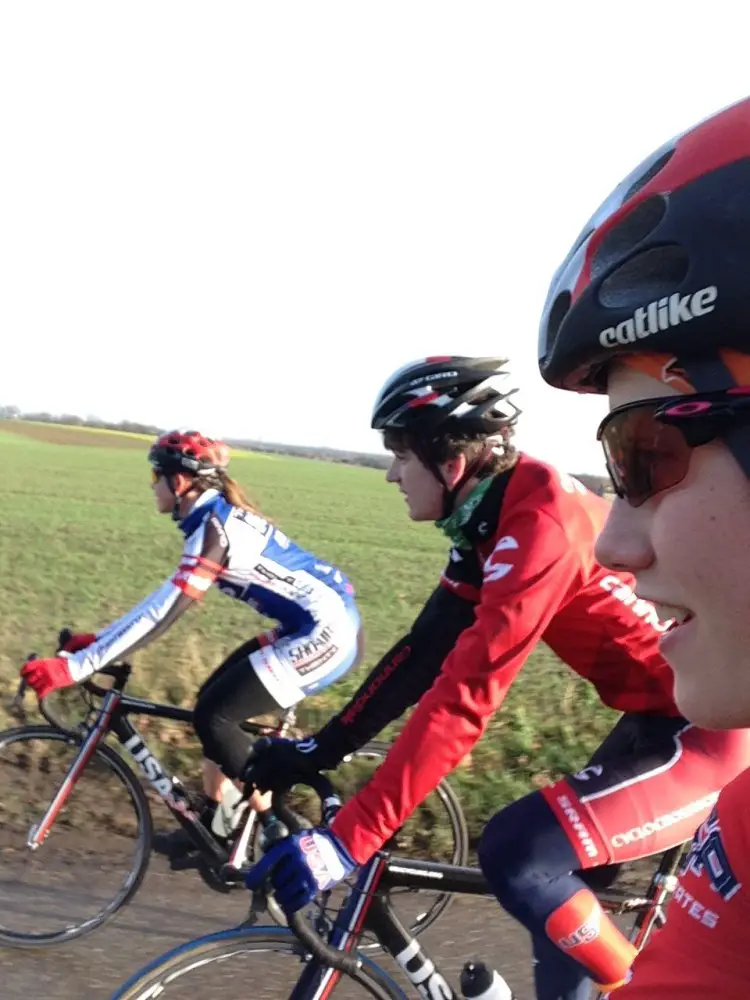
Some light riding during your taper will keep your legs used to spinning and still let you start the season fresh.
What should you be doing during that time frame? The general rule of thumb is to lower volume by half but maintain or even increase intensity. And I think that’s a fair description of things. My general recommendations to clients are to ride every day, but keep it very short and easy. Maybe 30 minutes a day or just a bit more. Nothing particularly hard, just enough that your legs remember what it’s like to ride a bike every day. Make Wednesday your hard day. Very hard. The workout I prescribe to clients is labeled as “go hard, go puke, go home.” It’s short but incredibly hard. Again, you want to keep or increase the intensity during your week, but the volume really falls away.
If you’re doing a longer taper that includes a weekend I like to have Saturday be a hard day as well. Again, shorter, but still hard. So do the local group ride, but keep the extra riding to a minimum. Or keep your usual ride shorter, but make it extra hard. Then let Sunday be off or very easy. A weekend day off is such a great time to catch up on things off the bike and get some great recovery in. It may feel weird but you’ll appreciate it next weekend when you race. A taper is definitely a time to ignore most of the “I should” thoughts you might be having and think about what you want or need to do.
Take all that hard work you’ve done and then hone it to a sharp point. Shed that residual fatigue you’ve been carrying from months of training. Allow yourself to get some rest but keep enough riding in the mix your body doesn’t go into full recovery mode shutdown. Hit your workouts extra hard when you do them, but otherwise keep the riding easy. A taper is definitely a bit of art and a lot of experience. Take notes on what does and does not work for you and keep in mind that may change from year to year and even with the various tapers of a season. But think of this as your last little bit of training before racing starts and make the most if it and all your hard earned form.
Be it a two week taper or one, the other critical issue leading up to your races is what we commonly refer to as openers, so called because we’re “opening up” our legs and all the energy systems we need to race effectively. We’ll look at those next week.























